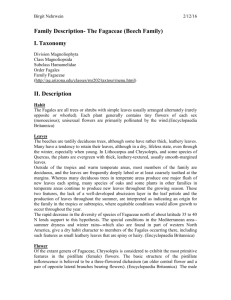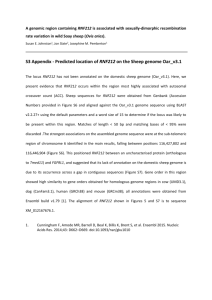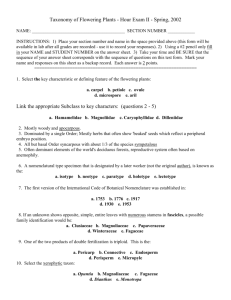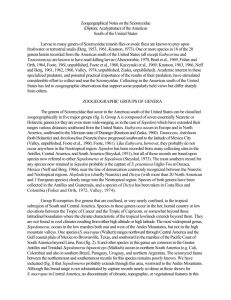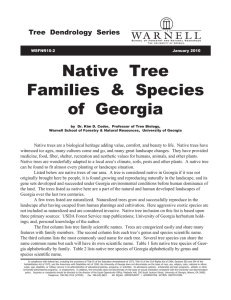focusing on tropical Asia oaks.
advertisement
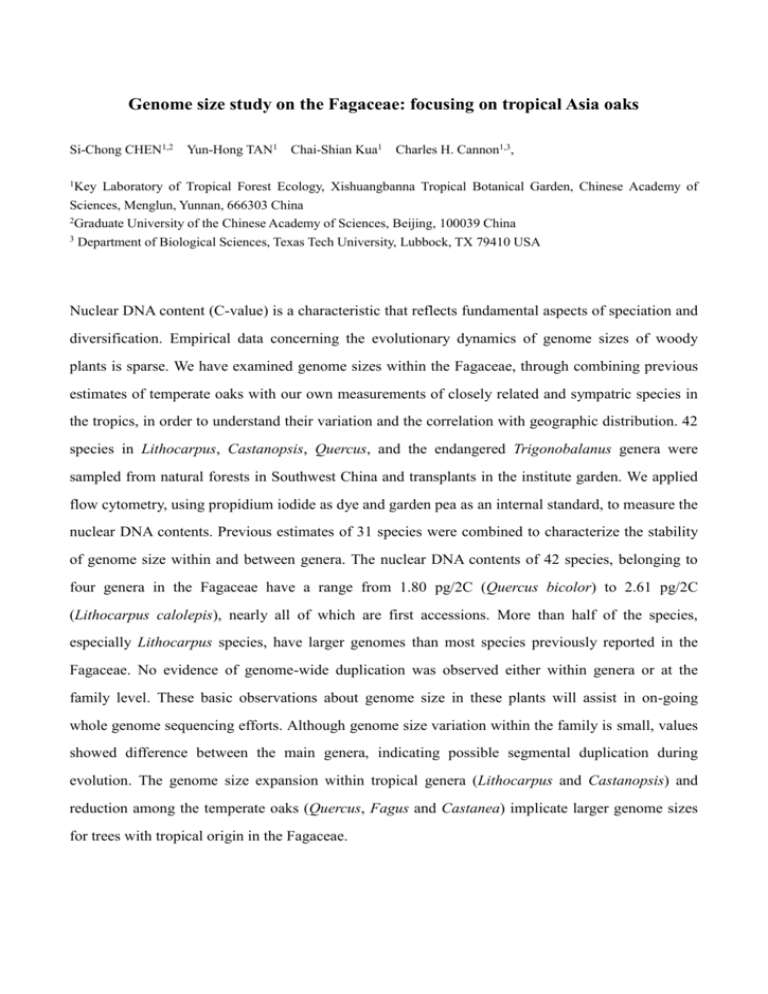
Genome size study on the Fagaceae: focusing on tropical Asia oaks Si-Chong CHEN1,2 Yun-Hong TAN1 Chai-Shian Kua1 Charles H. Cannon1,3, 1Key Laboratory of Tropical Forest Ecology, Xishuangbanna Tropical Botanical Garden, Chinese Academy of Sciences, Menglun, Yunnan, 666303 China 2Graduate University of the Chinese Academy of Sciences, Beijing, 100039 China 3 Department of Biological Sciences, Texas Tech University, Lubbock, TX 79410 USA Nuclear DNA content (C-value) is a characteristic that reflects fundamental aspects of speciation and diversification. Empirical data concerning the evolutionary dynamics of genome sizes of woody plants is sparse. We have examined genome sizes within the Fagaceae, through combining previous estimates of temperate oaks with our own measurements of closely related and sympatric species in the tropics, in order to understand their variation and the correlation with geographic distribution. 42 species in Lithocarpus, Castanopsis, Quercus, and the endangered Trigonobalanus genera were sampled from natural forests in Southwest China and transplants in the institute garden. We applied flow cytometry, using propidium iodide as dye and garden pea as an internal standard, to measure the nuclear DNA contents. Previous estimates of 31 species were combined to characterize the stability of genome size within and between genera. The nuclear DNA contents of 42 species, belonging to four genera in the Fagaceae have a range from 1.80 pg/2C (Quercus bicolor) to 2.61 pg/2C (Lithocarpus calolepis), nearly all of which are first accessions. More than half of the species, especially Lithocarpus species, have larger genomes than most species previously reported in the Fagaceae. No evidence of genome-wide duplication was observed either within genera or at the family level. These basic observations about genome size in these plants will assist in on-going whole genome sequencing efforts. Although genome size variation within the family is small, values showed difference between the main genera, indicating possible segmental duplication during evolution. The genome size expansion within tropical genera (Lithocarpus and Castanopsis) and reduction among the temperate oaks (Quercus, Fagus and Castanea) implicate larger genome sizes for trees with tropical origin in the Fagaceae.


